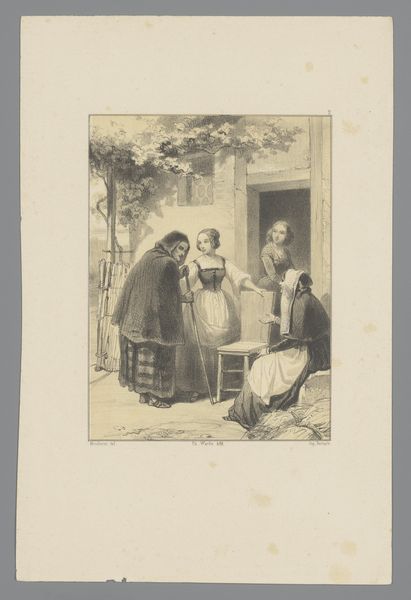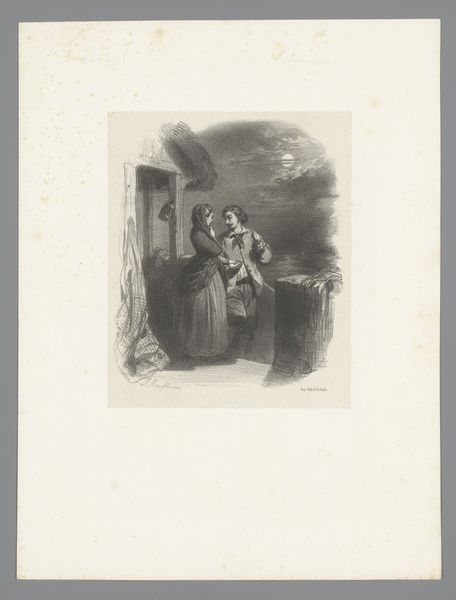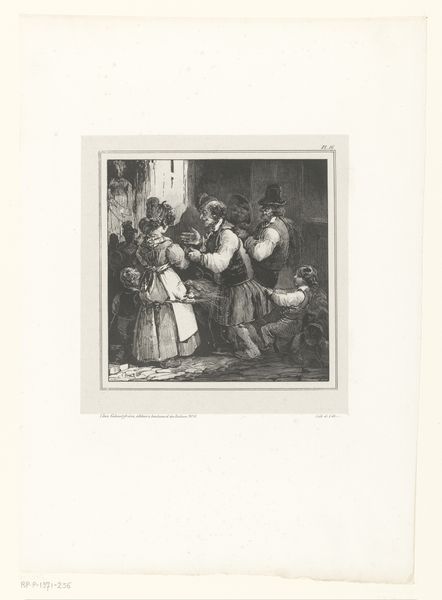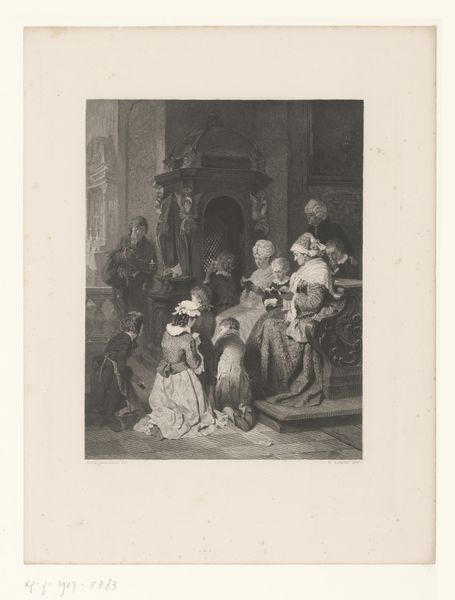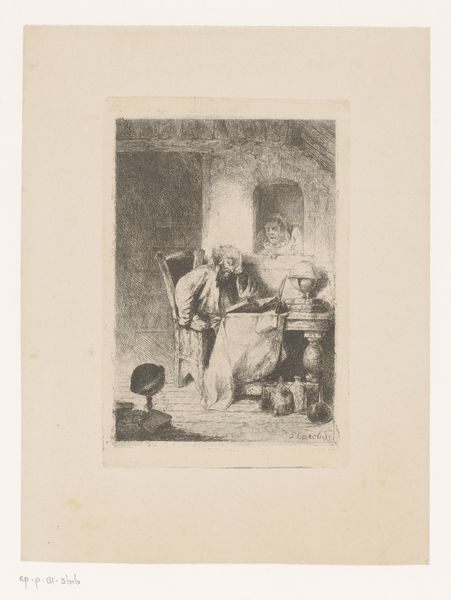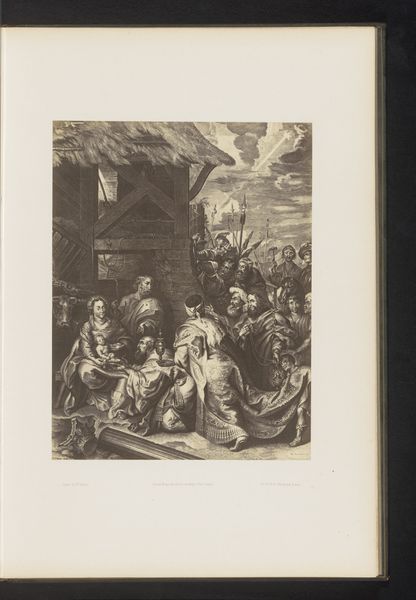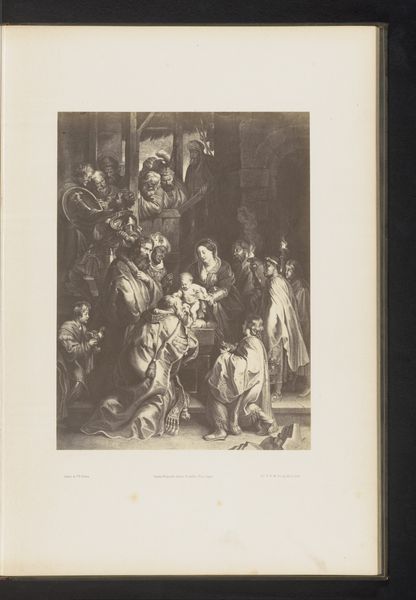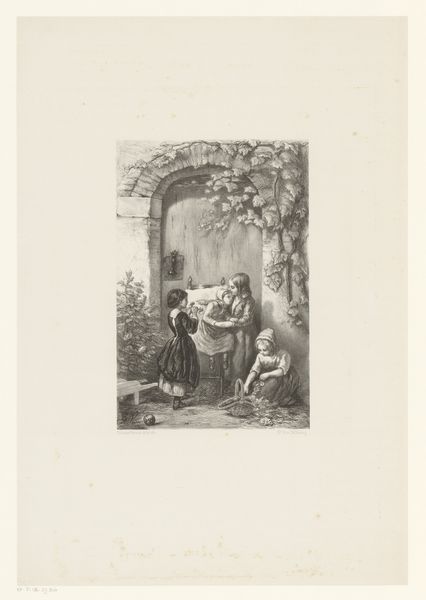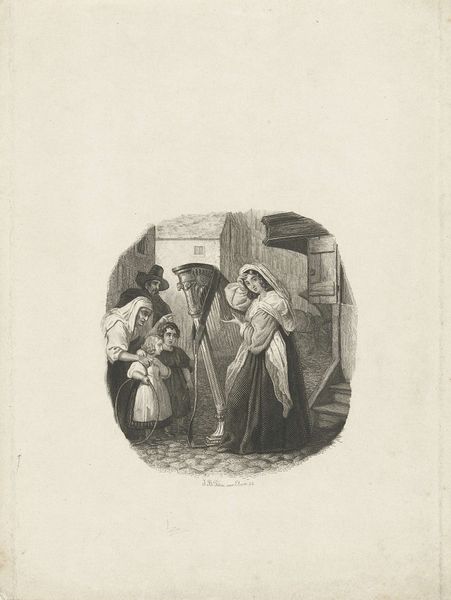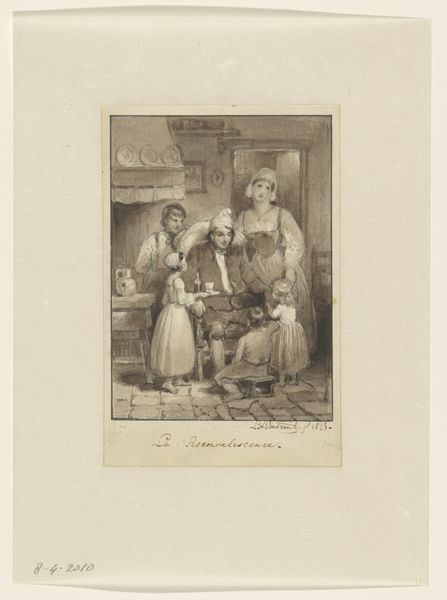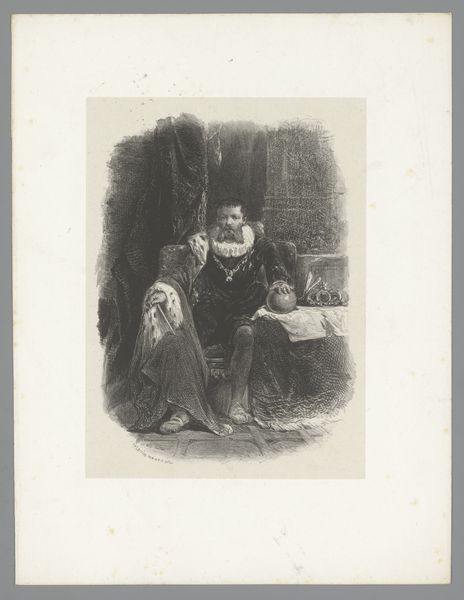
print, etching
#
16_19th-century
#
narrative-art
# print
#
etching
#
figuration
#
orientalism
#
line
#
genre-painting
#
academic-art
Dimensions: height 449 mm, width 310 mm
Copyright: Rijks Museum: Open Domain
Curator: This etching, made by Adolphe Mouilleron sometime between 1830 and 1881, is entitled "Kinderen met tulbanden spelen tikkertje," which translates to "Children with Turbans Playing Tag." Editor: What strikes me immediately is the texture. The light and shadow create such a tactile feel to the clothing, the building behind them… almost rough, and then suddenly smooth with the light. It really brings out the scene’s sense of play. Curator: Absolutely, and understanding the historical context of this piece is vital. The artist engages with Orientalist themes which, in the 19th century, often exoticized non-Western cultures, framing them through a Western gaze. Consider the implications of depicting children from such cultures at play – how might that reinforce or challenge prevalent stereotypes? Editor: I see your point. It also forces a reading on the labor. How was this printed, disseminated, consumed? Etchings are a laborious process. Whose labor made this image of children at play possible? There’s such a stark contrast there. Curator: The choice to depict children playing highlights themes of innocence and universality. Do these children really challenge social barriers? This reinforces the importance of questioning who is represented and why. Consider gender. Note the differing clothing styles. Are these meant to reflect the diverse roles they assume? Editor: That detail also influences the image’s materiality; the etched lines forming those robes look so rich compared to the lighter fabrics the girl off to the side wears. One wonders where the pigment came from, how accessible were the materials. It makes one appreciate the craftsmanship, though not excuse the orientalizing element. Curator: And this points to a larger narrative, the distribution and collection of such images speaks to the dynamics of power inherent in art production during that time. Thinking intersectionally can give us so much to unpack from even the seemingly innocuous moments this artwork captures. Editor: Reflecting on it, examining the lines and shadings emphasizes the global material processes through which artwork reaches our eyes today, giving me a new angle on both the creation and potentially loaded meaning it projects.
Comments
No comments
Be the first to comment and join the conversation on the ultimate creative platform.
